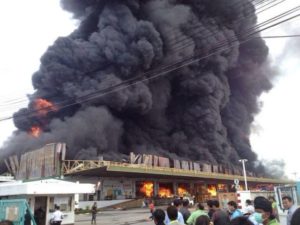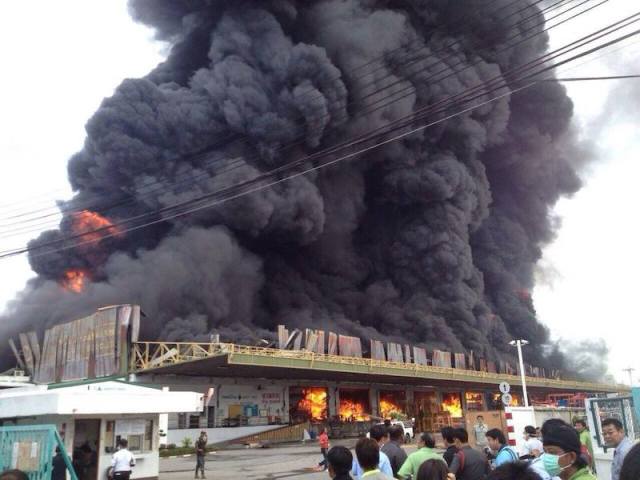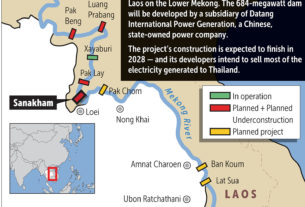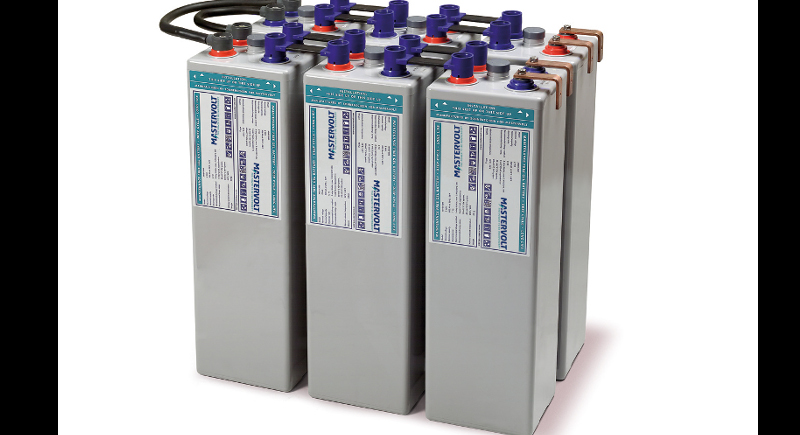
Fire at a chemical factory in Thailand’s Samut Prakan province; city planning allows residential areas close to factories
The fire at a chemical factory in Thailand’s Samut Prakan province raises a lot of questions about city planning and, in particular, about laws on industrial facilities. An expert says the history of the area is something that needs to be considered.
Dr. Pornsan Vichienpradit, a lecturer at the Department of Urban and Regional Planning in the Faculty of Architecture at Chulalongkorn University, told Thai PBS World that, in the case of Samut Prakan, the factory was built in 1989. The city planning law and regulations were first enacted five years later, in 1994.
“We cannot blame them for violating the laws, because they were there before them. Also, the community just expanded later. There were aerial photos showing that more people began to move into the area when Suvarnabhumi airport opened. Between 2002 and 2005, the area started to get crowded.”
There is also speculation that the law, amended in 2017 by the current administration, enables such an industrial facility to co-exist in the residential area, though Dr. Pornsan explains that the 2017 law does not directly relate to this circumstance.
The said law is about delisting small-sized factories, equipped with 5 to 50 horse-power machines, or “factory type 1”, from being overseen by the department of industrial works, which is a kind that is allowed in any city zone.
Dr. Pornsan speculates that the burning factory is not type 1, because it is quite big and probably equipped with heavier machinery. So the law, amended in 2017, does not directly relate to this matter.
He said when the authority approves the factory planning, he understands that it will probably look at whether this factory will create pollution. The fire that just happened is something unexpected.
Most of the Samut Prakan’s income was generated from the industrial sector, with additional small portions of logistics, storage, agriculture, and retail, among others. It is near the main international airport, so it is understandable that industrial facilities will be supported.
“But the fire should make us rethink whether the type of factories we used to approve should be approved (in the future), because they bring this kind of risk,” said Dr. Pornsan.
The city planning expert said that, generally, landowners in most areas want their neighborhood to be a red or purple zone, which is a commercial zone that will be subject to fewer limitations when it comes to property development, so the selling price will be higher than land in a green or yellow zone.
People then have to decide if they want to continue to live there, their children will live there, the commercial zone might carry a risk of being too close to industrial facilities, such as in Samut Prakan where city planning allows any kind of business in the red zone.
Samut Prakan’s city plan allows everything in their red zone. It did not define what kind of commercial business, what kind of residences would be allowed and even allowed many kinds of industrial facilities.
“If you ask the landowner, anyone would want this but, if we look from a different perspective, such as public safety and public welfare, should we allow this. Balancing out these factors is quite difficult.”
This circumstance is not unique to Samut Prakan. Dr. Pornsan said that industrial zones in Thailand have quite a number of issues that need to be dealt with, whether it is Map Ta Phut in Rayong province, Jana in Songkhla province, or the Bang Chak refinery in Sukhumvit Soi 64, which caught on fire just 6 years ago. This is because the city area expands to cover the suburb, which has been used for industrial purposes for a long time.
He said inefficient regulation to control city expansion will enable such incidents to happen again, where residential areas expand to cover the existing industrial areas. He sees that in Bangkok’s vicinity, Samut Prakan, some areas in Samut Sakhon, and in Pathum Thani, the same kind of circumstances might exist.
In principle, any city planning should involve the locals, but it also relates to how the government communicates with the people, whether every sector is engaged in the decision-making process.
City planning should happen with the consensus of every sector involved, with consultation provided by the experts used by the government. The government is the one that turns it into laws, so it has to be able to explain the regulations and the zoning that happen.
“This is a good opportunity to make people aware of this issue and begin to examine the zoning around where they live and ask “What (kind of business) might pose a risk to us?” said Dr. Pornsan.
Source: https://www.thaipbsworld.com/samut-prakans-city-planning-allows-residential-areas-close-to-factories/


